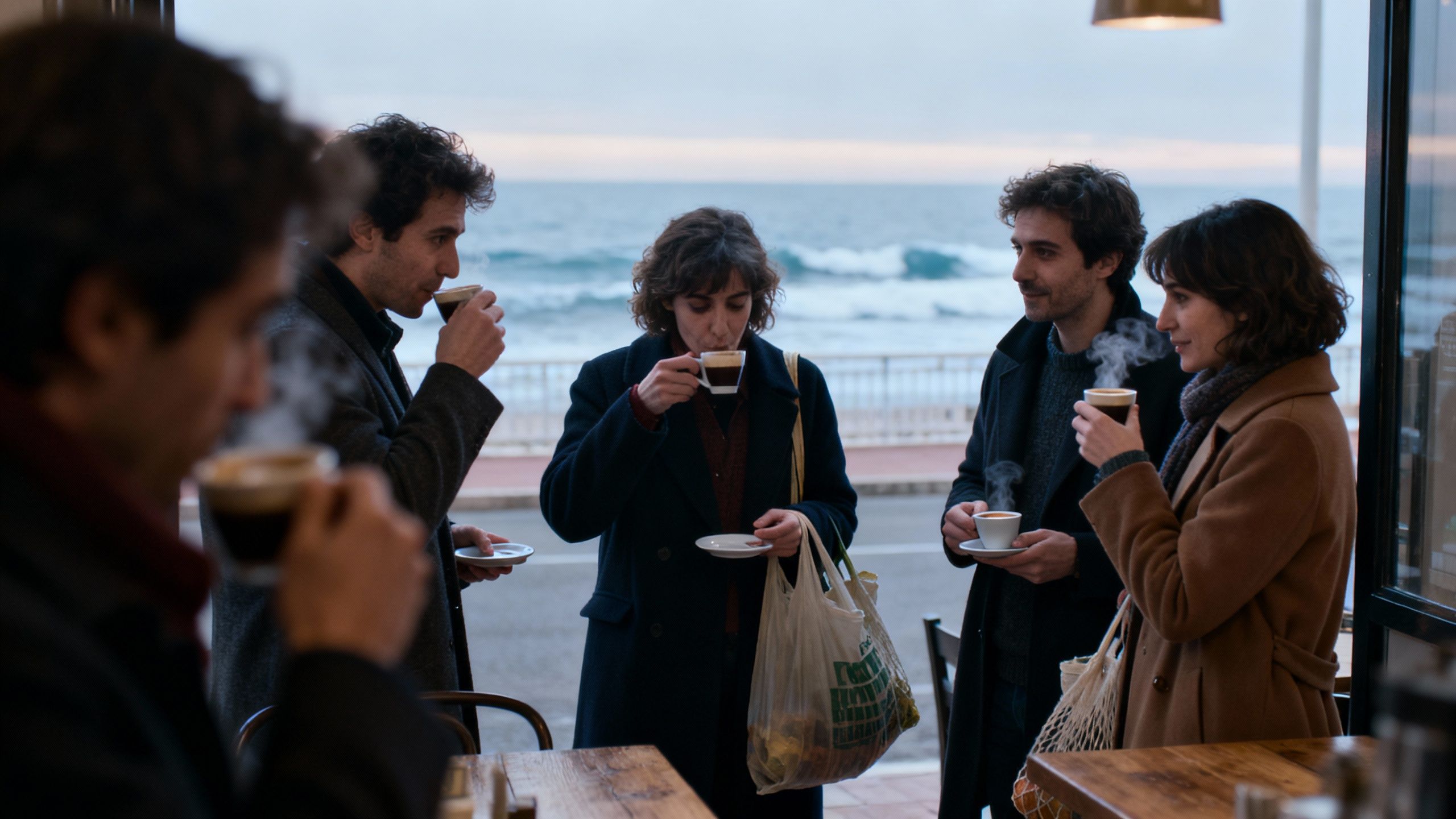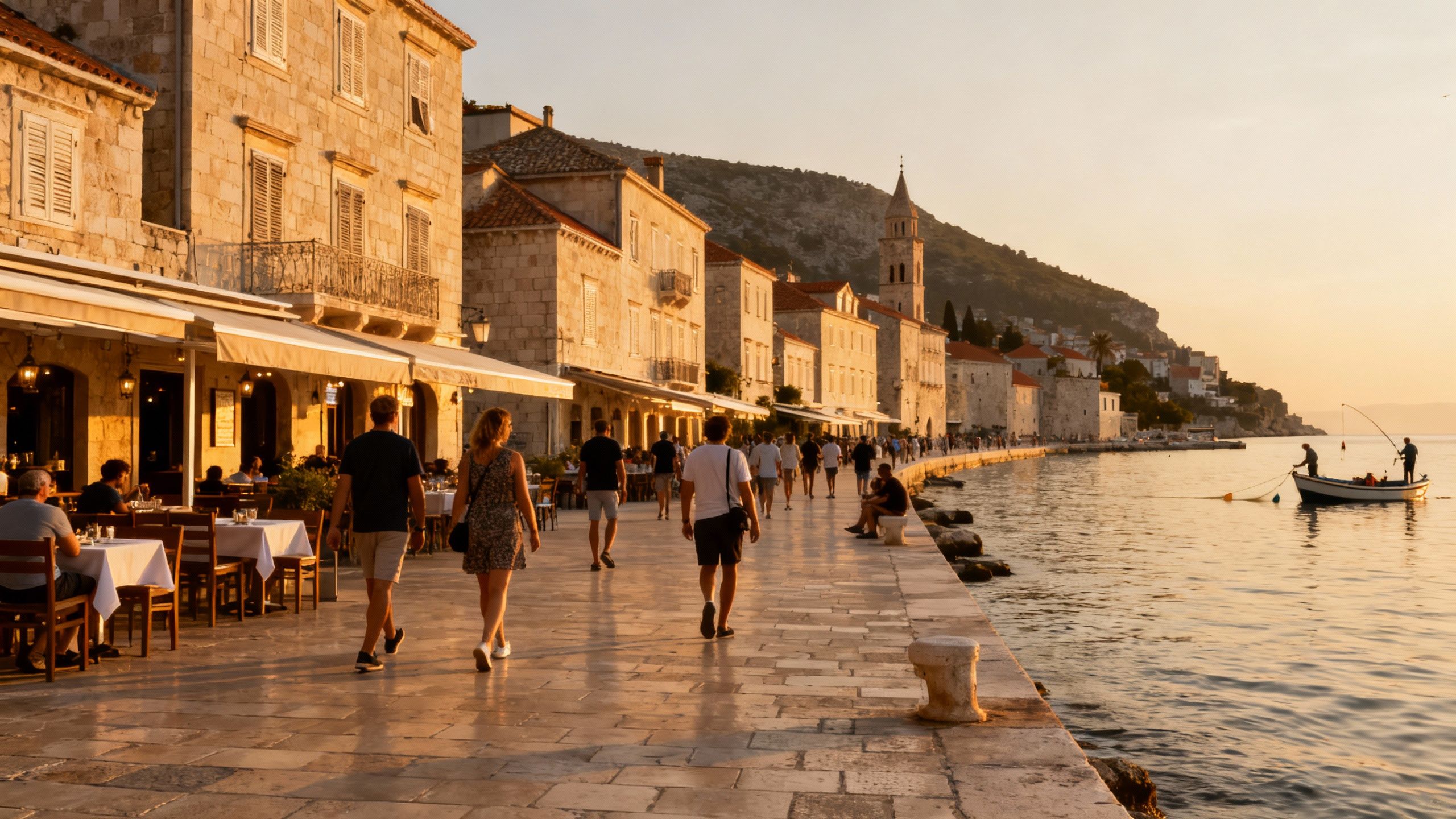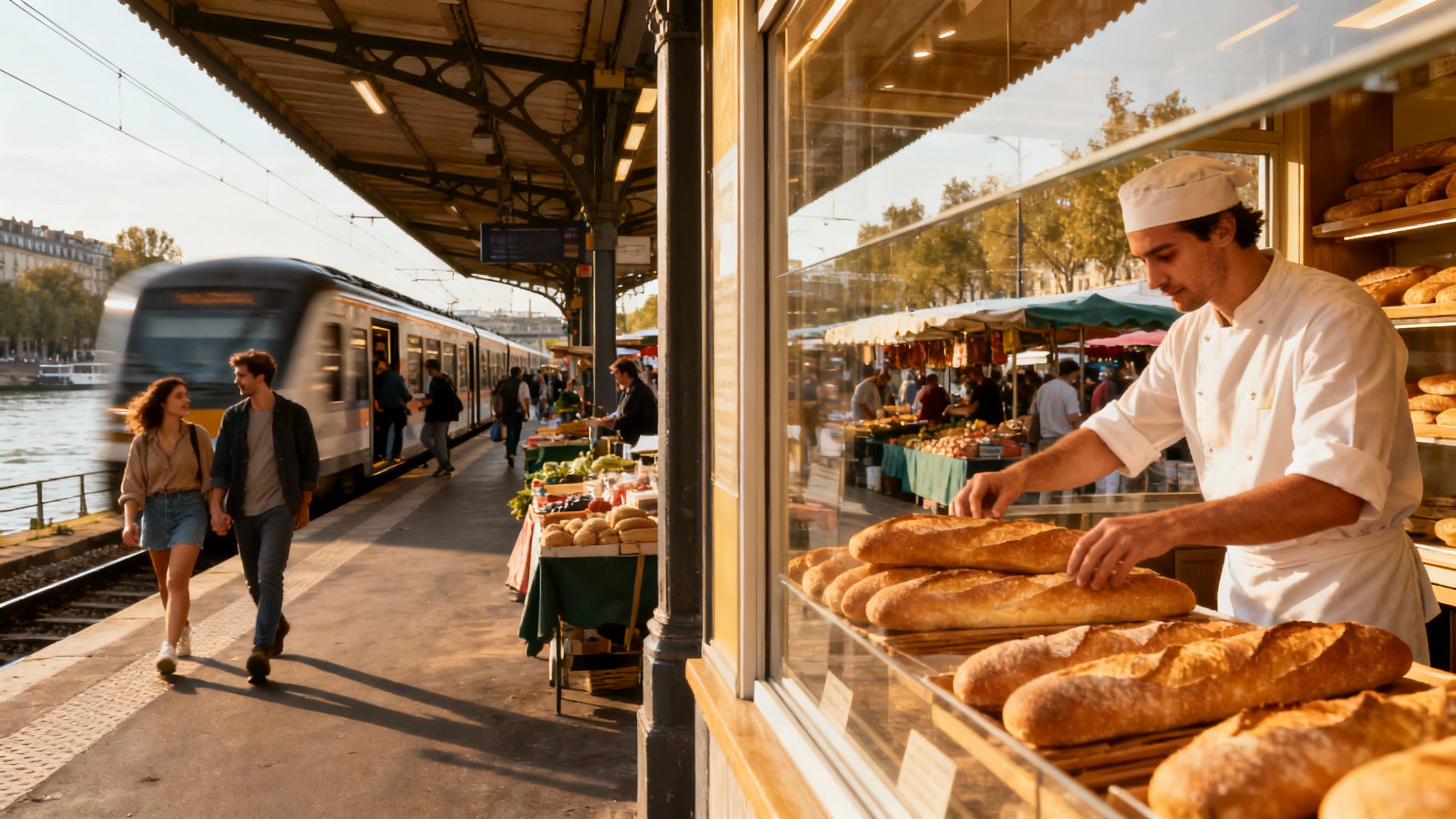Why France’s ‘Expensive’ Tag Hides Regional Value
France isn’t uniformly ‘too expensive’ — 2024–25 data show stabilised prices and clear regional value for buyers seeking market‑town life, not Riviera glamour.
Imagine the day: a weekday morning market in Perpignan, ventilators of warm bread and cassoulet steam, shutters opening on Rue Saint-Jean and a barista sliding an espresso across a narrow marble counter. Life here moves with a clarity that cities sometimes lose — slower breakfasts, midday shops, and evenings anchored by the sea or a village square. For many international buyers the image of France is Paris or the Riviera; the reality worth considering is regional variety, quieter towns with character, and neighbourhoods where the cost of entry still buys you sunlight and local rhythm. That dissonance between image and place is the reason this article argues something contrarian: France’s reputation for being uniformly “expensive” masks fast-changing regional value for lifestyle-led buyers.
Living the French life that isn’t Paris (or Nice)
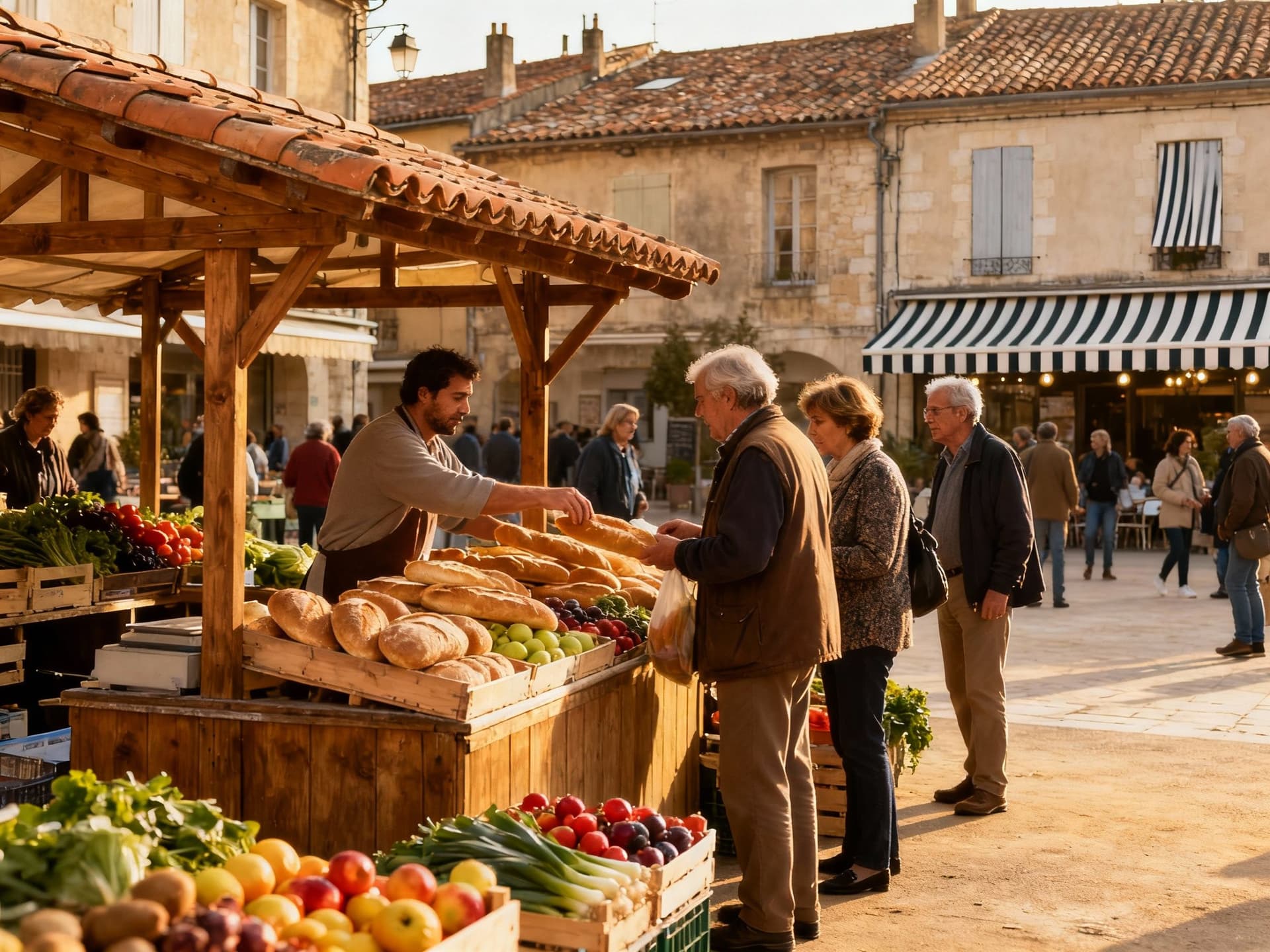
Start with daily rhythms. In towns such as Perpignan, Albi, Saint‑Brieuc or the Tarn hill villages, mornings are market-led and mobility is local: you walk to the boulangerie, dine late, and the street life folds into the square. These are places where a modest house with a garden is still within reach of an active cultural life — museums, weekly markets, small wine bars — and where neighbourhoods are defined by streets and cafés rather than postcodes. Demographic shifts recorded by national datasets show renewed interest in peri-urban and regional towns as remote work stabilises; buyers trade central convenience for space and a programme of local life. The trade-off often favours lifestyle gains at lower comparative cost than headline coastal or Parisian prices.
Spotlight: Perpignan and the Roussillon hinterland
Perpignan smells of citrus groves and sea breeze; its streets still show Catalan influence in tile, timber and tapas-style cafés. The train links to Barcelona and regional airports mean weekend flights and international connectivity without Côte d’Azur prices. For buyers seeking a mix of coastal access and inland calm, Perpignan’s neighbourhoods such as Le Castillet and the old town offer compact apartments, while suburbs and nearby villages deliver villas with land. Lifestyle here is about outdoor markets, late-night tapas, and a slower pace framed by light — not the celebrity glamour of the Riviera but a dependable, lived-in quality of life.
Food, markets and social life that anchor choices
If you buy in a French regional town, you buy into a weekly pattern: market mornings, aperitif streets, and local festivals that shape the calendar. This influences what to look for in a property — proximity to the market square, a usable kitchen for local produce, shade for summer terraces and storage for winter provisions. Recent market reporting shows a stabilisation in national prices during 2024–25 while volumes rebound, but that national movement masks regional variations. Practically, that means lifestyle-led choices remain feasible where local offers have not been pushed to Riviera-level premiums.
- Lifestyle highlights to search for in regional France:
- Weekly market location — buy a flat within easy walking distance of the main market square (examples: Perpignan’s Place Rigaud, Albi’s Place du Vigan).
- A private outdoor space — terraces or small gardens matter more than extra interior rooms in warmer regions where outdoor living extends the year.
- Transport balance — proximity to a regional train station or low‑cost airport route keeps the international life practical without coastal premiums.
Making the move: how lifestyle maps to property choices
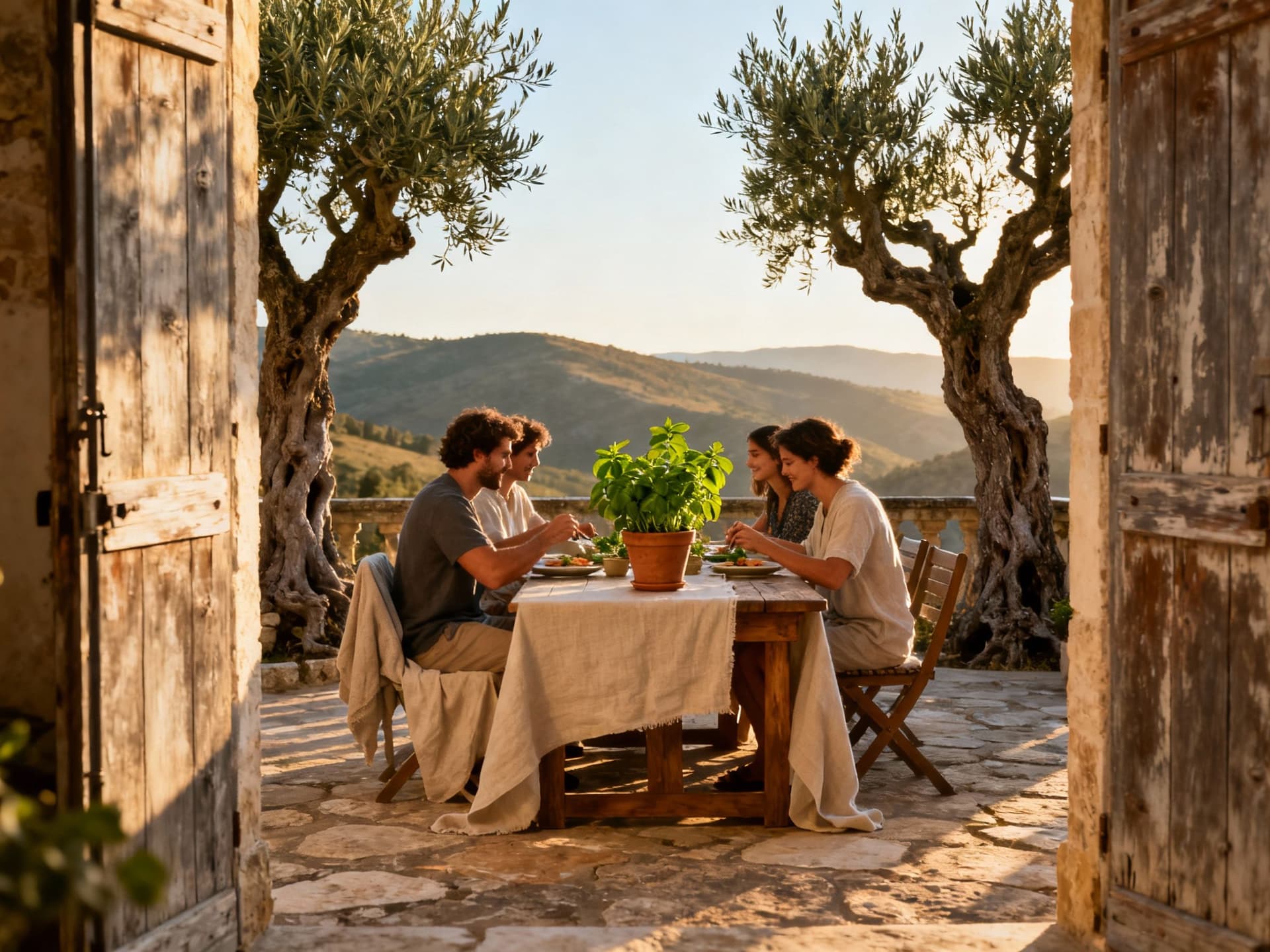
Dreams need anchors: zoning, local planning, and seasonal occupancy shape what you’ll actually live in. Look beyond price-per-square-metre. Consider heating costs for older stone houses in Brittany, cooling and insulation for sun-exposed Provençal homes, and the expense of renovating juridically protected façades in historic centres. National housing statistics and regional datasets (INSEE) show significant differences in housing stock age and heating types across departments — a practical factor that affects running costs and renovation budgets. Local experts translate lifestyle wishlists into properties that work year-round.
Property styles that suit the life you want
If you want town rhythm — narrow streets, cafés, and market trips — seek renovated apartments in old quarters (stone walls, smaller footprints). If you want gardens and harvests, target village houses with courtyards or small farms in Nouvelle‑Aquitaine or Occitanie. Coastal buyers who prize local community over luxury marina life often find value in smaller harbours or fisher towns rather than high-end resorts. Each form requires a different due-diligence checklist: different inspections, different renovation permissions and different seasonal maintenance needs.
Work with local experts who know the rhythm
A local agent who lives the weekly life will spot a property’s seasonal strengths and weaknesses. They know which streets flood in winter, which neighbours keep lively squares, and which municipal programmes will renovate a market square. Local notaires and lenders (mortgage rates softened in 2025 for some profiles) are equally essential: they translate national signals into what it means for your purchase timeline. Choose professionals with verifiable transactions in the exact neighbourhoods you like — documented experience beats glossy listings.
- Practical steps that blend lifestyle and process:
- 1. Map the weekly life you want (market days, cafés, train links) and shortlist neighbourhoods accordingly.
- 2. Ask local agents for three comparable sales in the past 12 months on your street — not flattering marketing comparables but actual signed deeds.
- 3. Commission targeted surveys (structural, roof, damp) that reflect the local climate rather than generic checklists.
Insider knowledge: what expats wish they’d known
Here’s the real talk from buyers who moved to regional France: language matters, but so does presence. Simple acts — joining a market queue, attending a municipal fête, visiting the mairie — open doors far faster than paperwork alone. Many buyers overestimate the need for flawless French at purchase and underestimate the value of local goodwill when renovating or negotiating community matters. Expats who integrated early found better maintenance deals, faster renovations and a warmer welcome.
Cultural smartcuts that smooth life
Learn a handful of practical phrases tied to local life: ask about the market, the boulangerie hours, and waste-collection days. Attend the monthly council meeting or the town’s brocante to meet neighbours. These small, practical integrations often secure better local services and reduce friction when you carry out renovations or want to rent seasonally. It’s not about perfection in language; it’s about predictable participation in communal rhythms.
Long-term lifestyle checks: ageing population, school provision and transport
Ask whether the department is adding school places, improving rail services, or investing in town centres; these interventions materially affect resale and daily life. INSEE and local préfet publications provide horizon scans on demographic change that matter for long-term community sustainability. If you plan to live there for a decade, the presence of a health clinic, school options and a modest local employment base are practical markers of a living town, not a weekend resort.
Conclusion: buy the life, but verify the ledger. France’s broad ‘expensive’ reputation is real in pockets, but national data and 2024–25 market signals show stabilisation and renewed regional opportunity. For international buyers the opportunity is to match precise lifestyle scenes — a market square, a seaside path, a village fête — to the right property type and local team. Start by visiting on market day, ask to see recent deeds, commission targeted surveys, and work with local agents and notaires who can prove transactions in the exact streets you love. That way you’ll move not into a headline, but into a living, sustainable French life.
British expat who relocated to Marbella in 2012. Specializes in rigorous due diligence and cross-border investment strategies for UK and international buyers.
